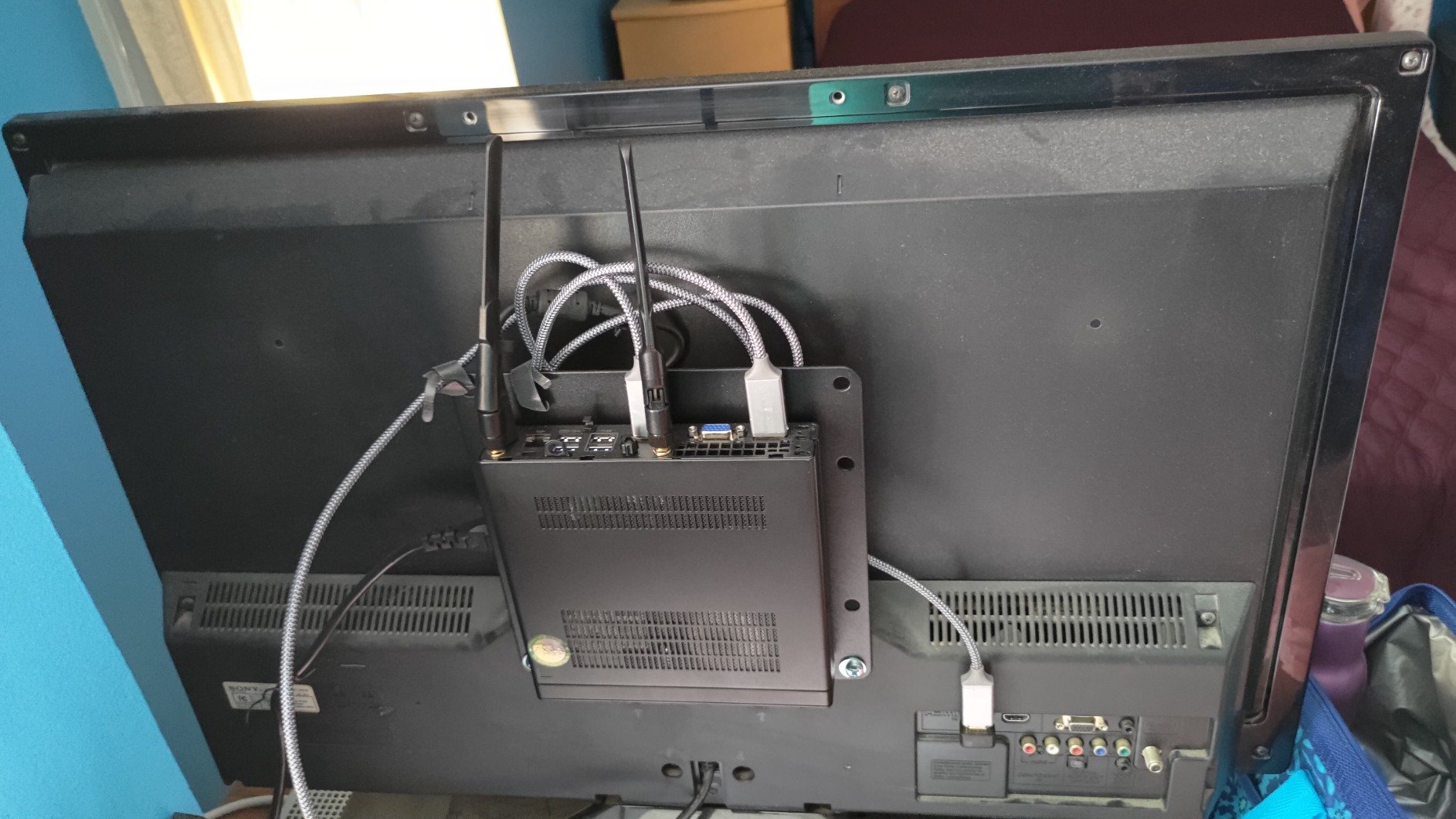Apologies if this is the wrong instance for this.
Is there a best option for HTPC streaming solutions besides throwing Linux on an old desktop? Plugging in a desktop for streaming doesn’t work too well for wall mounted televisions. My options are mini PCs or a 3rd party streaming stick. Even a RasPi stick running OSMC should do the trick.
These 3rd party sticks online are extremely tempting for power and features but I’m concerned about embedded malware. Best option would be to wipe it and load OSMCor raspbian to ensure its clean. Anyone have experience with this?
Care to share your setup?
$14.41 | DQ06 ATV Mini TV Stick Android12 Allwinner H618 Quad Core Cortex A53 Support 8K Video 4K Wifi6 BT Voice Remote Smart TV Box | Link
Runner up: $12.90 | Orange Pi Zero 2 W 1GB RAM DDR4 Mini PC Allwinner H618 Orange Pi Zero 2W WiFi Bluetooth SBC Single Board Computer Zero2W | Link
Update: My ideal solution would be $20-$50 for a replacement to several fire sticks in my home. For a solution around $100 I’d just go with a old refurbished mini pc from ebay/amazon and throw full Linux on it.
Setting up Kodi via the linux OSMC distro or even Android TV both work. Might stream games with steam link. Eventually going to setup jellyfin in my home
Current Plan: Get a mini pc and mount it behind / near my television. Ideally I would prefer just a stick for a cleaner / cheaper solution.
$100 MiniPC - HP EliteDesk 800 65W G2 Business Mini PC Desktop Computer/Intel Quad-Core i5-6500T up to 3.1GHz/ 8GB DDR4 RAM/ 256GB SSD/WiFi/Bluetooth/USB 3.0/ Windows 10 Professional OS(Renewed) | Amazon
Photo of mini pc mounted behind a TV.

Update2:
Finally researched about the Orange Pi (rasp alternative) and the darn thing comes with full hdmi! Orange Pi 3B Full HDMI and SD / eMMC / M2 (sata3) slots!
Orange Pi 3B 4GB RAM Rockchip RK3566 Mini PC Quad-Core 64-bit WiFi+BLE Gigabit Run Android Linux OpenHarmony OS SBC Single Board https://www.aliexpress.us/item/3256805733558464.html


I have a Jellyfin server running locally. All my TVs either have a Roku device connected or are a Roku embedded TV. I also run PiHole and all DNS queries in my local network go through it. That way all telemetry, “phoning home”, and advertisments are blocked. All my TVs have the Jellyfin Roku app installed to stream my local content.
If you want access outside your local network. I setup Nginx Proxy Manager (NPM) locally and have my own domain pointing back to my NPM server to access my Jellyfin content and other self-hosted services that I run.
Just filtering DNS will not block telemetry. Might block some, but no.
Yeah I used to have a pihole running on a zero wireless and it did fine. Moved and never plugged it back in. I just put my IoT on my guest network.
Well then your devices are still phoning home with telemetry that is still tied to your ISP assigned IP address (guest network doesn’t provide any privacy).
I’m aware. A network adblocker is on my todo list for sure.
Fwiw, I setup my pihole at home using docker. I run a full size desktop as my all-the-things server and use it as a docker host. Makes managing my services much easier.
I could, of course, use an actual raspi for this, but I run a bunch of other services - including my plex host and file server - on the same machine. Using docker makes it dead easy to update my various services as needed and no worries about dependency Hell between them.
Yeah. One reason I want to get new sticks is to take my mini pc to set it as my services host to learn.
Things like pihole, home automation server and jellyfish. I would add to the list over time. Maintain config documentation.